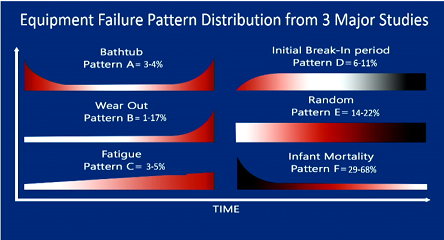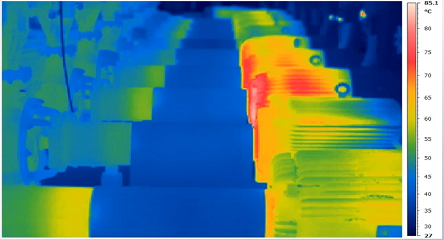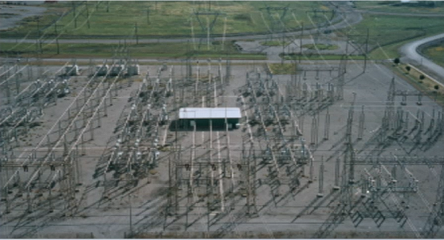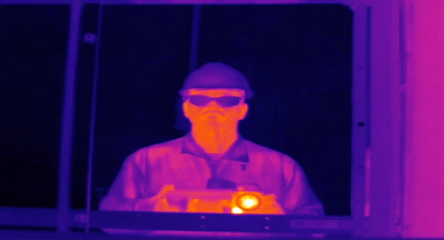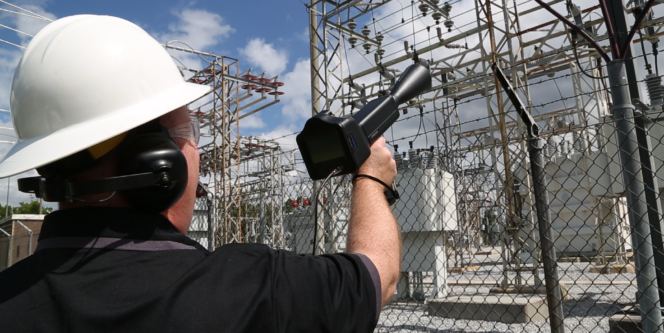Why is a Crystal IR Lens not Suitable for Industrial Applications?
Some manufacturers of crystal infrared windows claim their products are “Arc Resistant”!! This is a very dangerous statement to make especially when we already know that crystals cannot take any form of impact, yet alone resist the force present during an Arc Flash Incident!! Which can produce temperatures in excess of 15,000°C and send large pieces of shrapnel and molten metal flying through the air…
Infrared windows WILL NOT PROTECT you from a direct Arc Flash explosion (there is very little that will) they will however allow you to inspect safely as you do not expose yourself to energized components during the inspection and as such remove 99.999% of the causes of arc flash.
There are two traditional failure modes associated with infrared windows, they are breakage from external impact and failure due to water ingress, both these failure modes are prevalent in the Fluoride based crystals used in the manufacture of infrared windows today.
There are a number of crystals available for use as lenses in infrared viewing panes, the most common being Calcium Fluoride (CaF2). This has been used for many years in different applications as it has the additional benefit of being transparent and therefore is also used for visual inspections as well as infrared. We are able to use this material at present as crystals are at present exempt from impact test (if over 1.4 mm) and the impact and flammability requirement is only required on polyermeric materials. This standard is for switchgear up to 1.5 kV. This is an area that requires immediate rectification as crystal cannot take any form of impact and we are therefore producing IR Viewing Panes using crystals with no structural integrity.
Above 1.5 kV IR Viewing Panes manufacturers can certify to IEEE requirements for Visual Viewing Panes (IEEE standard C37.20.2, specifically the specification required for section A.3.6.) the standard which specifies the minimum MANDATORY test requirement for a viewing pane (see IEEE datasheet). This is the standard that the VPFR and VP12 infrared viewing panes have been built to.
Another disturbing issue is that far too often companies purchase crystal infrared viewing panes as they want to complete the visual inspection of the switchgear and LOTO operations. Crystal infrared windows cannot meet the minimum requirement for impact under the mandatory requirement of IEEE and as such these companies may indeed have inadvertently de-rated their switchgear, infrared viewing panes are not exempt the tests that visual viewing panes require, especially when used in this manner.
The fact that Calcium Fluoride cannot resist impact should be enough to discount it from use in industrial infrared viewing panes, however there are other disturbing issues regarding this material it is both hydroscopic (absorbs water) and is affected by high frequency noise and vibration levels.
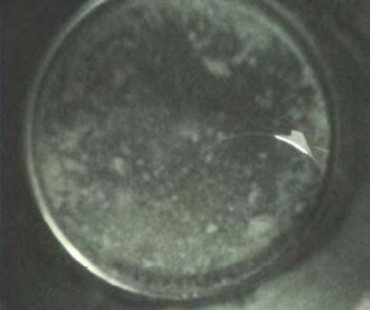
The picture of the infrared window above is of a Calcium Fluoride crystal in an air-conditioned switchgear cabinet that was damaged by moisture, after 2 years the window had zero infrared or visual transmission. We can coat crystals to reduce the ingress of water but this only puts off the inevitable, it is for these reasons that IRISS does not recommend the use of crystals in infrared viewing panes.


